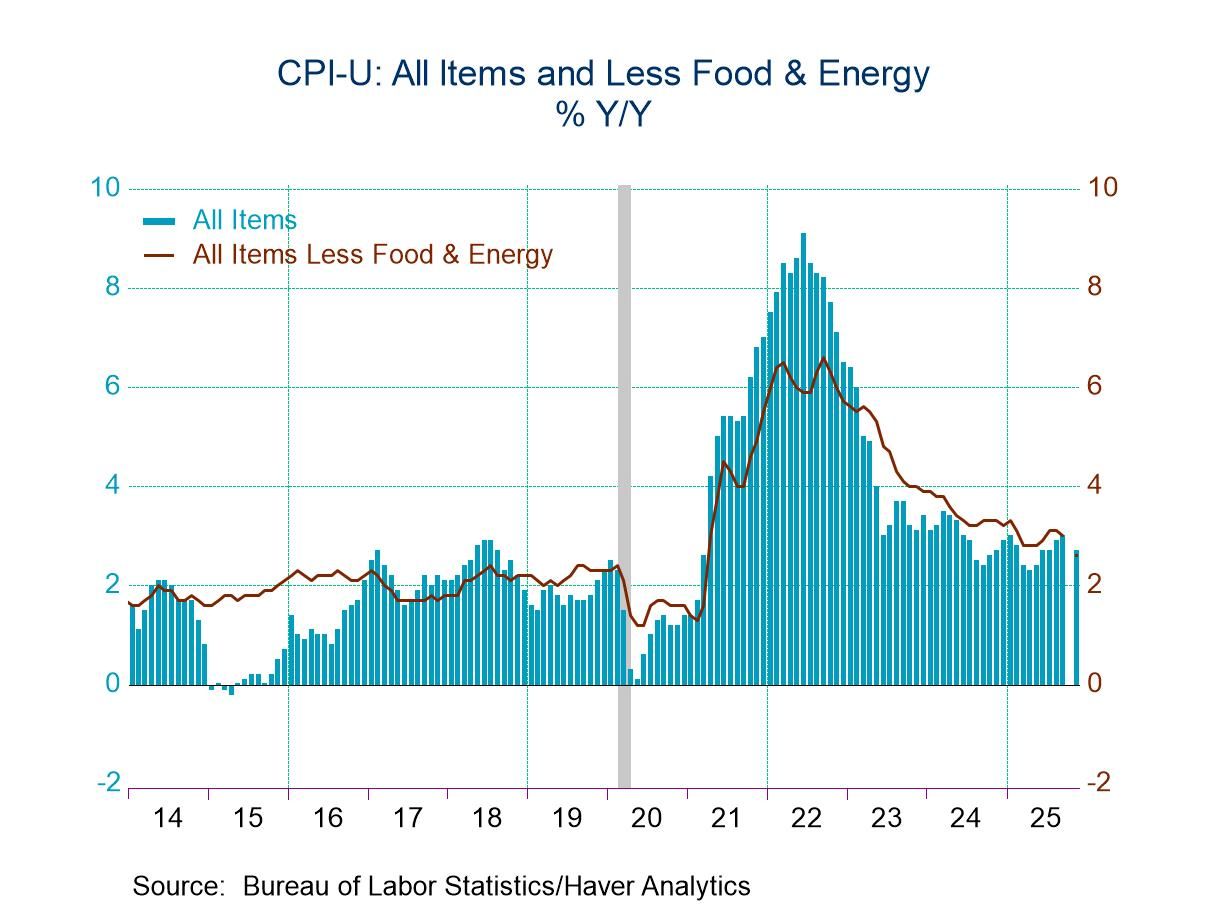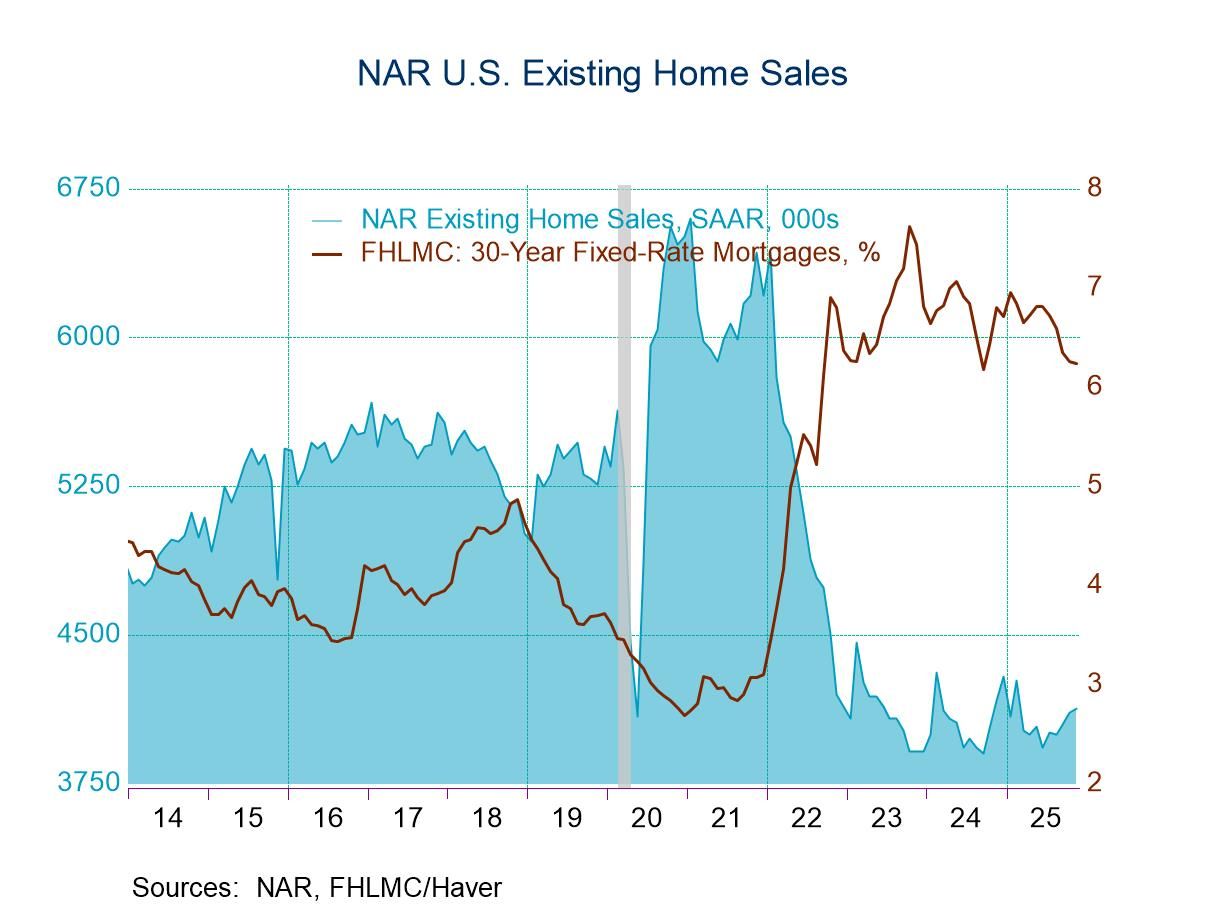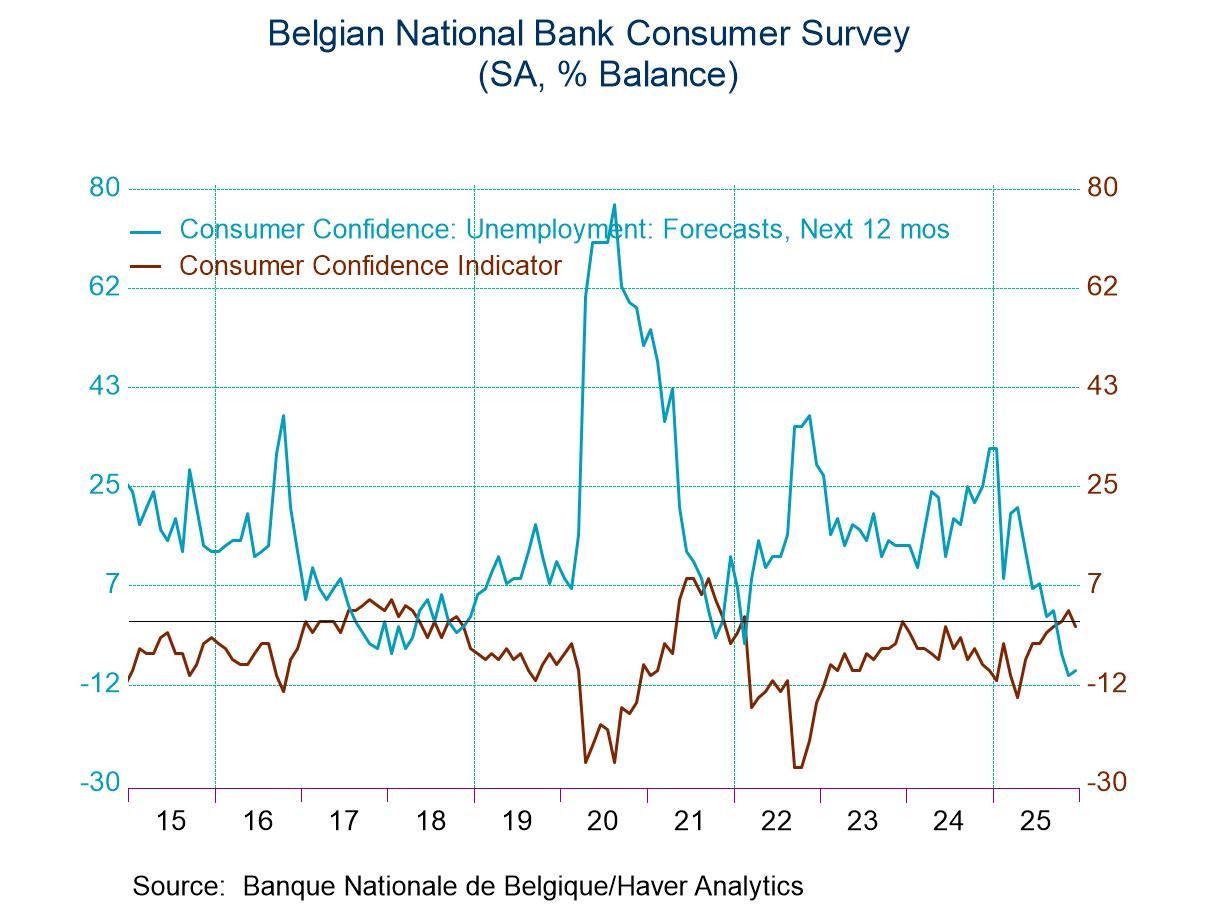EMU IP Falls in July, Driving 3-Mo Growth Rate to a Decline

Industrial sector performance in the European Monetary Union has turned decidedly dicey. In July total output excluding construction foundered, falling by 2.3%: manufacturing output fell by 2.1%, consumer goods output rose by 1.2%, with intermediate goods output falling by 0.8%, and capital goods output falling by a large 4.2% month-to-month. This is a lot of weakness. Within the consumer goods sector, durable goods output fell by 1.6% as nondurable goods output rose by 1.2%. Across these same sectors, output mostly fell in June while output rose uniformly in May. As a result of these comparisons, we don't have any clear trend, but we do have a lot of volatility in output with the best of strength in the oldest observations.
Divergent overall and manufacturing trends Turning to sequential growth rates, overall industrial output falls by 2.2% over 12 months. The fall is nearly the same at minus 2.3% annualized over six months while over three months the pace of decline is reduced to -0.4% at an annual rate. For manufacturing, output actually accelerates. Over 12 months output falls by 2.6%, over six months it falls at a 1.9% annual rate, and over three months it increases at a 1.1% annual rate.
Suspicious manufacturing trend However, the manufacturing results don't appear to be particularly robust. For example, over three months manufacturing output may be rising, but overall consumer goods output is falling. Within consumer goods, durables, and nondurables output both log output declines. Output falls for intermediate goods. The increase in industrial output comes entirely from an outsized rise in the output of capital goods of 5.7% in annual rate. As a result of those numbers, the manufacturing IP progression from weakness to strength is created by only one sector. Only capital goods output has a progression of accelerating growth among the three sectors (and the two consumer sub-sectors). Capital goods output falls by 3.5% over 12 months, falls at a 1.9% annual rate over six months and then rises at a 5.7% annual rate over three months.
Quarter-to-date trends indicate more pronounced weakness In the quarter-to-date (QTD) - a calculation that looks at the growth rate in July over the second quarter average calculating a true growth rate from the middle of that quarter - there's a decline in output overall at a 6.8% annual rate. There's a decline in manufacturing output at a 6.2% annual rate as well; there are declines in each manufacturing sector, and sub-sector, over the QTD period. This, of course, is different from the three-month calculation that you look only at output this month compared to the level of three-months ago. The QTD growth rate, calculated over the second quarter base, has the advantage that as further quarterly data come are released, each new observation compares output to that same base in Q2. As we add another month and then finally a third month of data and the change is driven by the new data not by a shift in the base. The QTD calculations give us a bit of a better idea how growth is evolving in the quarter per se.
The dispersion of growth Among the 13 early reporting European Monetary Union members, 8 show output the declines in July, 7 show output declines in June, and 5 show output declines in May. That's a clear progression toward worse results. Sequential data show 7 countries with output declining over three months, 6 with output declining over six months, and 6 with output declining over 12 months. However, as is the case for manufacturing output, the QTD calculations find more weakness with 9 countries showing declines in output on a QTD comparison. Here it's easiest to point to the exceptions. The exceptions are Malta with a 55% growth rate, output in Greece logs a 28% growth rate, and output in Belgium posts a 6.6% growth rate in output with Germany at a 0.2% growth rate of output growth. The median change in output for the quarter to date is minus 7.6% annualized. In the quarter-to-date calculations, 3 of the 4 largest EMU economies show declines for early Q3, with Germany, obviously, being the exception. Across all the monthly and sequential periods in the table, there are output declines persistently in two or three of the four largest EMU economies (Germany, France, Italy, and Spain)

These trends are not devastating, but they're not positive. Large economics are not proving to be more resilient. And with the energy to Europe cut off and with the ECB raising interest rates, clearly growth in Europe is facing a relatively high hurdle. The manufacturing PMI has moved lower in each of the last two months; it is lower over three months compared with its six-month average and it's lower over six months than its 12-month average, and lower over 12 months than its previous 12-month average. The PMI data also show that breadth is waning although we get that sense by looking at the output patterns across EU member countries as well.
The data in the table are not particularly encouraging and the economic and geopolitical background do not inspire hope for improved performance. Europe appears to be in trouble and at this point avoiding a recession would seem to call for a miracle.
Robert Brusca
AuthorMore in Author Profile »Robert A. Brusca is Chief Economist of Fact and Opinion Economics, a consulting firm he founded in Manhattan. He has been an economist on Wall Street for over 25 years. He has visited central banking and large institutional clients in over 30 countries in his career as an economist. Mr. Brusca was a Divisional Research Chief at the Federal Reserve Bank of NY (Chief of the International Financial markets Division), a Fed Watcher at Irving Trust and Chief Economist at Nikko Securities International. He is widely quoted and appears in various media. Mr. Brusca holds an MA and Ph.D. in economics from Michigan State University and a BA in Economics from the University of Michigan. His research pursues his strong interests in non aligned policy economics as well as international economics. FAO Economics’ research targets investors to assist them in making better investment decisions in stocks, bonds and in a variety of international assets. The company does not manage money and has no conflicts in giving economic advice.






